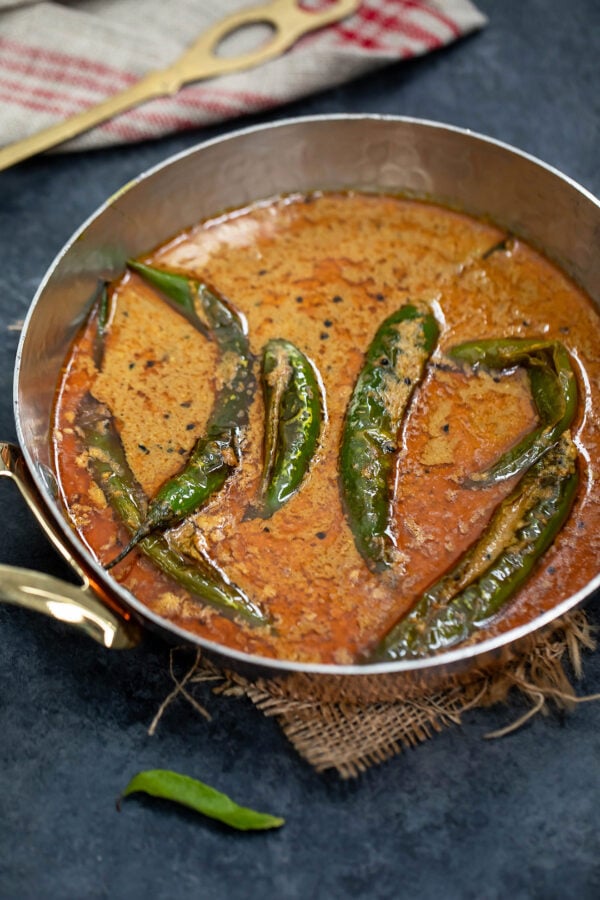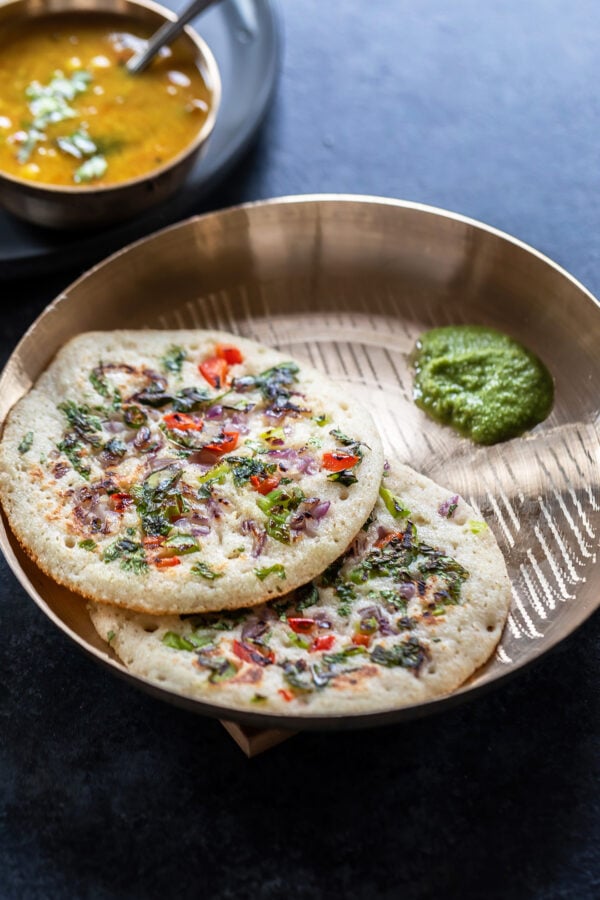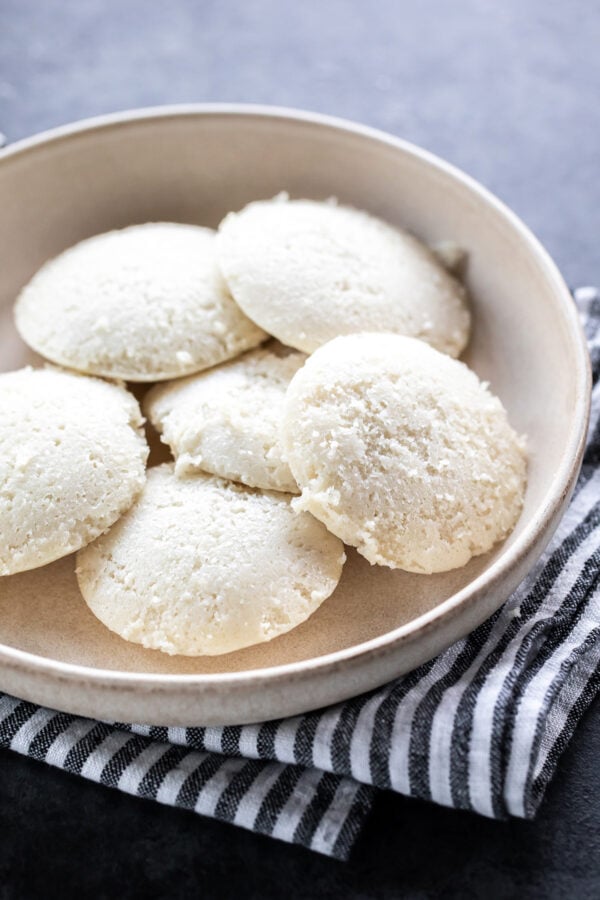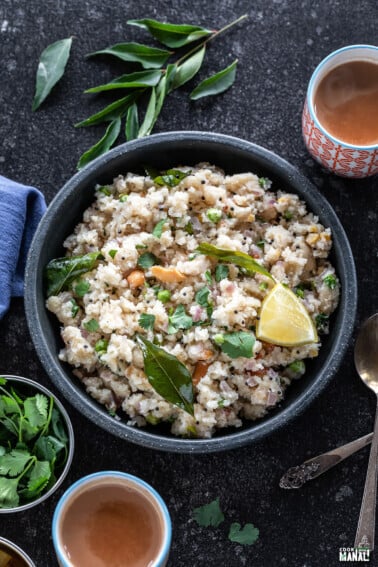How to Make Sambar
This simple sambar recipe uses basic Indian pantry staples and yields a very flavorful sambar which is perfect to go with your favorite idlis and dosa!
This post may contain affiliate links. Please read our disclosure policy.
Don’t let the long list of ingredients intimidate you- making sambar at home is easier than you think. My sambar recipe is simple, yet it scores high on taste and flavor. Made with lentils and vegetables, this sambar is spicy, tangy, and has a hint of sweetness from the jaggery. It’s best enjoyed with soft, fluffy homemade idlis or crispy masala dosa.
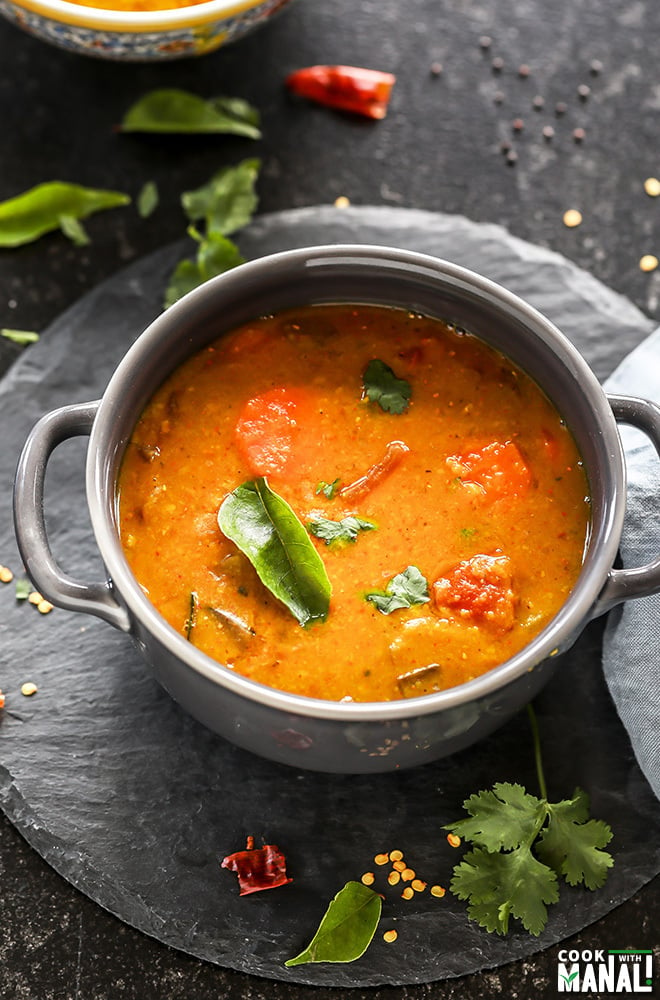
My fondest memories of eating idli with coconut chutney and dosa are from a small restaurant in Chennai, India where I used to go with my dad when I was 10 years old. The city was called Madras back then. Every year, my dad and I would travel from Delhi to Madras and it would take us 36 hours by train to reach there. We would start our mornings with the softest idlis dunked in chutney and sambar. My love for south Indian food began right there.
Over the years, I have had countless bowls of sambar, some that I loved and some I didn’t care much for. I have also made sambar countless times at home, trying different techniques and ingredients. And before blogging it, I also tested it several times to make it easy yet flavorful. The sambhar recipe that I am sharing with you is the one that I feel is the simplest of all yet tastes good. I don’t like watery sambar so the consistency of this sambar is slightly on the thicker side. You can always adjust the consistency as per your preference.
Ingredients Required
Here are the key ingredients required to make a sambar.
- Lentil (dal): Lentils form the base of sambar. Usually it’s made with toor dal (split pigeon peas lentil) but can also be made by mixing moong and toor dal or masoor (red lentils) and toor dal.
- Vegetables: a number of vegetables are traditionally used in sambar like pearl onion, tomatoes, pumpkin, eggplant, drumstick, carrots, okra etc. Using different vegetables makes the sambar flavorful. However, my recipes doesn’t use a ton of veggies. I use tomato, drumstick, eggplant and carrots. You can add more veggies as you like.
Manali’s Tip
I don’t like mushy vegetables in my sambar and prefer they still have a bite to them. The texture of the vegetables really impacts the overall flavor of the dish in my opinion. That’s why I like to cook them in an open pan for a few minutes, just enough to help them hold their shape.
- Sambar powder: the taste of the sambar depends heavily on the sambar powder which is a spice mix made by grinding several spices. Use your favorite brand of sambar powder or make one at home (see recipe below).
- Tamarind & Jaggery: these ingredients add the little tartness & sweetness to the sambar respectively.
- Final Tadka: and a good tadka (tempering) at the end with mustard seeds, curry leaves and hing is what makes the sambar so delicious! I like using ghee for the tadka in my sambar. You can use oil if you want to keep this recipe vegan.
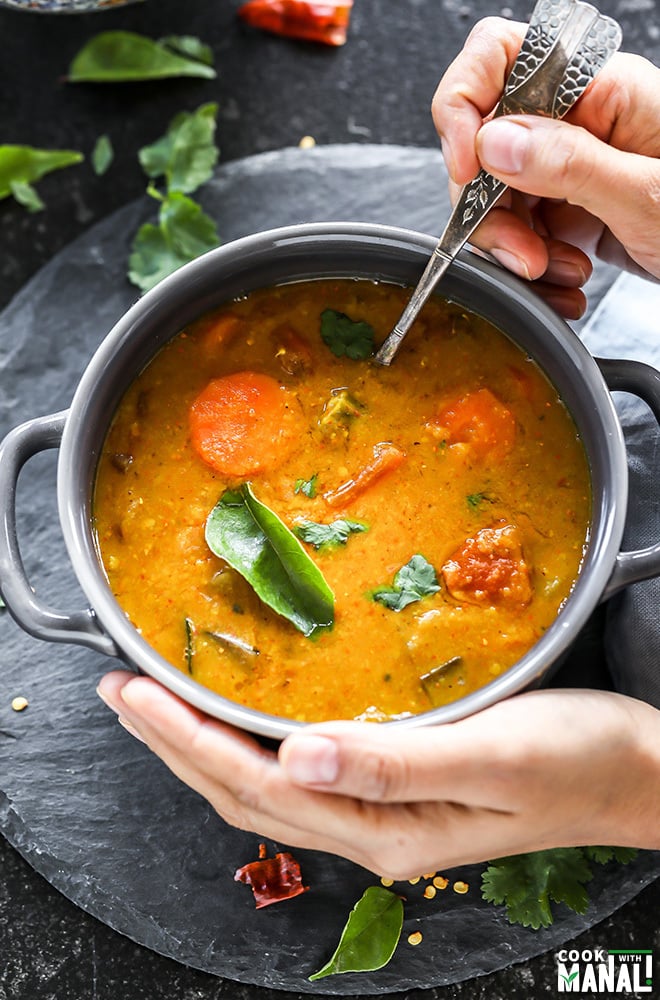
Homemade Sambar Powder
In case you can’t find sambar powder, here’s a quick recipe to make it at home.
In a pan over medium heat, dry roast the following spices in a pan on medium heat until fragrant, around 3 to 4 minutes.
- 1 tablespoon chana dal
- 1 tablespoon coriander seeds
- 2 dried red chilies (or more to taste)
- 1/2 teaspoon cumin seeds
- 1/2 teaspoon mustard seeds
- 1 clove
Let cool and then grind to a powder. Store in an airtight container and use as needed.
Let’s Make Sambar at Home
Here’s how to make my simple sambar recipe at home which actually tastes good!
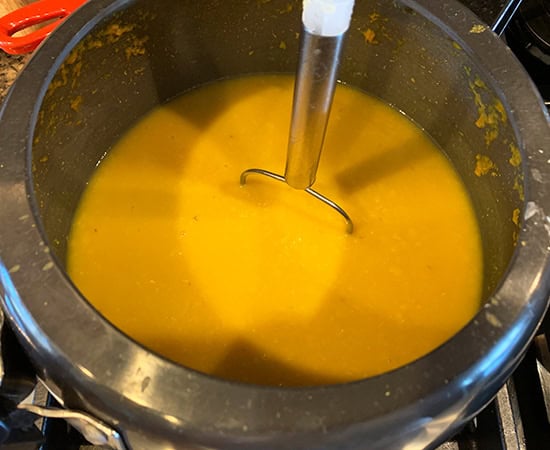
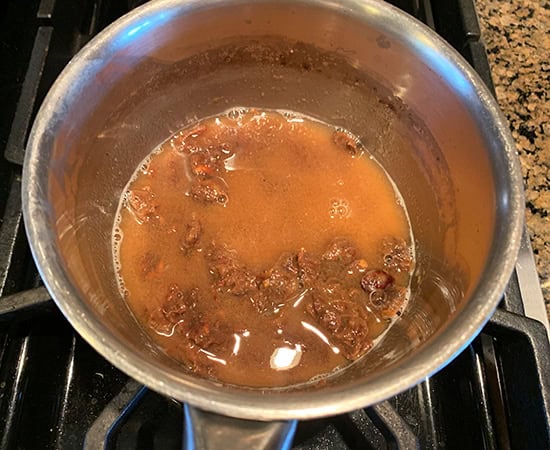
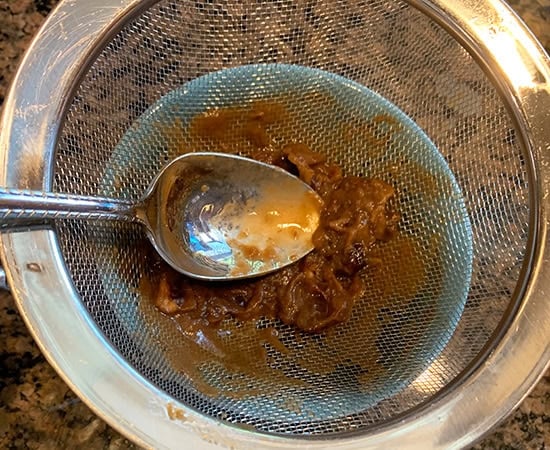
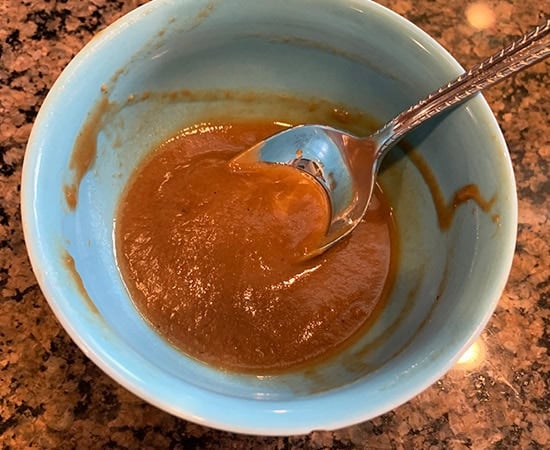

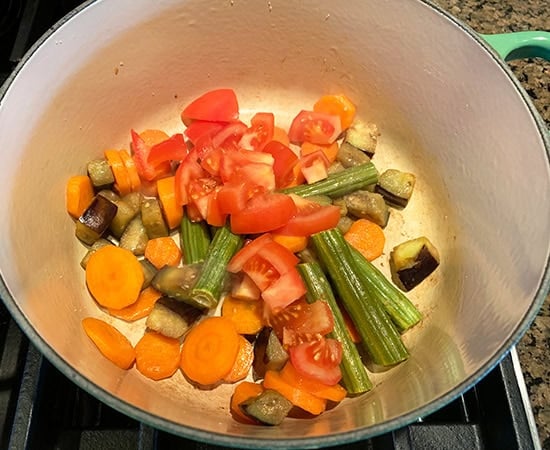
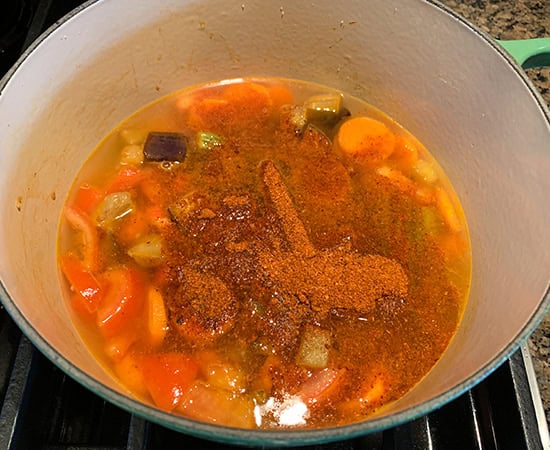
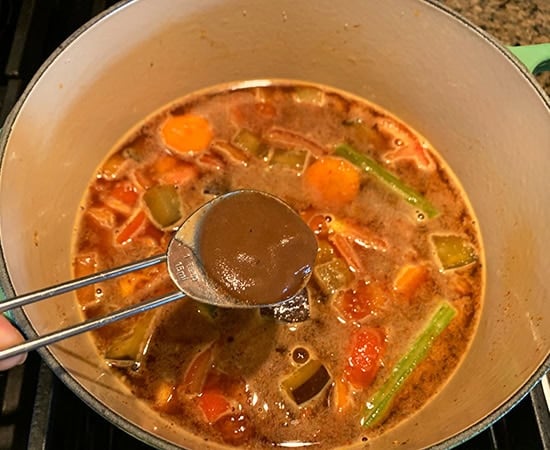
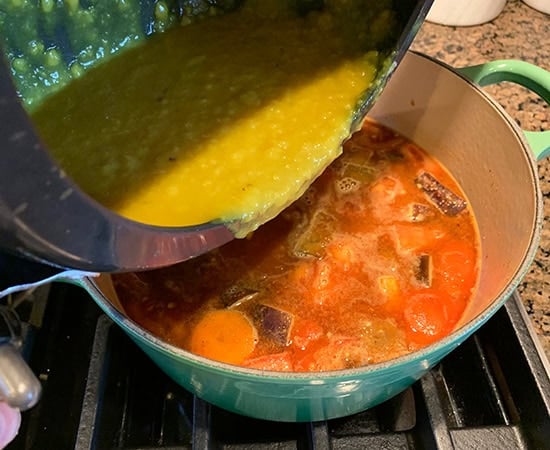
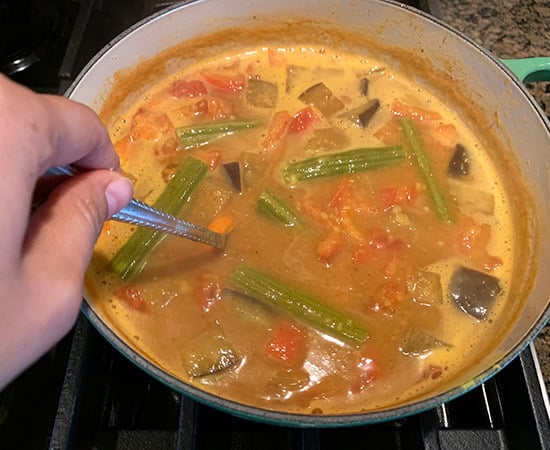
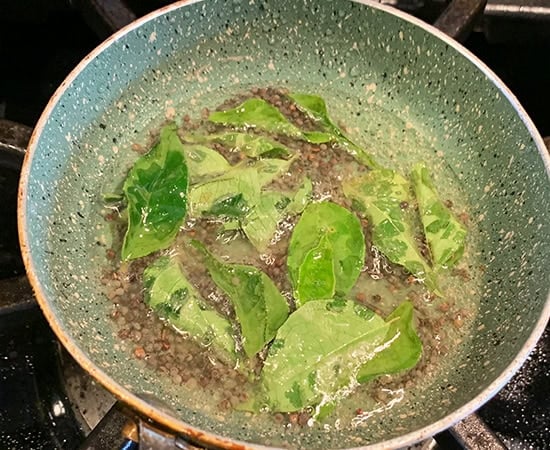
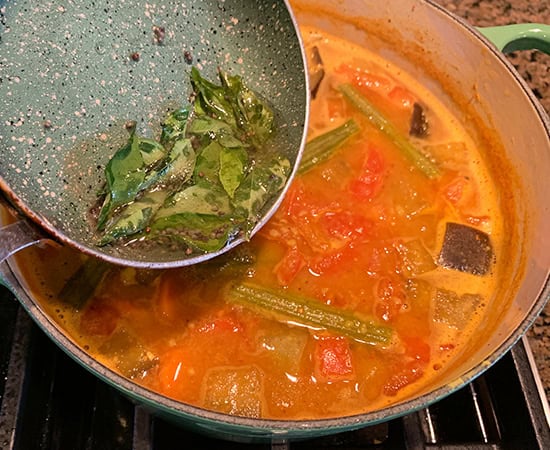
Storage and reheating: Leftover sambar will stay good in the fridge for up to 3 days. It will thicken considerably in the refrigerator. I would recommend adding some water to it while re-heating. You can reheat in the microwave or over the stove-top.
You can also freeze the sambar. Don’t do the tadka if you plan to freeze it. I would also skip eggplant in the sambar if I plan to freeze. Eggplant doesn’t freeze as well in my experience. Thaw it overnight in the fridge and then do the tadka on the day you plan to eat it.
Simple Sambar Recipe (That Actually Tastes Good)
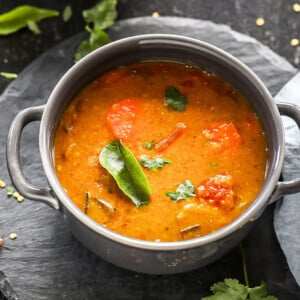
Ingredients
To Pressure Cook the Dal
- 1 cup toor dal/arhar dal pigeon peas lentil
- ½ teaspoon turmeric powder
- 1 teaspoon salt
- 3 cups water 24 oz
Tamarind Juice
- 1 tablespoon tamarind piece
- ⅓ cup hot water
For Cooking The Vegetable
- 2 teaspoons oil
- ½ cup chopped eggplant
- 2 medium carrots diced
- 7-8 drumsticks I used frozen ones that I got from Indian store
- ½ teaspoon salt adjust to taste
- 1 medium tomato chopped
- 3 cups water 24 oz
- 2 tablespoons sambar powder homemade or store bought, adjust to taste
- 2-3 teaspoons powdered jaggery
- ½ teaspoon kashmiri red chili powder optional
Tadka/Tempering
- 1 tablespoon ghee or use oil
- ¾ teaspoon mustard seeds black
- ¼ teaspoon hing (asafoetida)
- 10-15 curry leaves
- 1 tablespoon cilantro chopped, to garnish
Instructions
- Wash 1 cup of toor dal and then add it to a stove-top pressure cooker along with ½ teaspoon turmeric, 1 teaspoon salt and 3 cups of water. Cook for 5 whistles on a medium-high flame, then lower the heat to medium-low and let it cook for another 5 to 6 minutes.Once the pressure releases naturally, open the cooker and mash the cooked dal lightly with a potato masher. Set aside.If using an Instant Pot, pressure cook for 9 minutes on high pressure and let the pressure release naturally.
- Soak a small tamarind piece (around 1 tablespoon) in 1/3 cup of hot water for around 20 minutes. Then strain the water after 20 minutes using a strainer. You will get 3 to 4 tablespoons of tamarind pulp. Set this aside.
- In a pan, heat 2 teaspoons of oil on medium heat. Once the oil is hot, add ½ cup chopped eggplant cubes and cook for around 2 minutes.
- Add 2 medium carrots (diced), 7 to 8 frozen drumsticks (it’s a vegetable, do not confuse with chicken drumsticks) and ½ teaspoon salt and cook for 2 more minutes. Then add 1 medium chopped tomato and cook for 1 more minute.
- Add around 3 cups of (24 oz) water and stir and then add 2 tablespoons of sambar powder. You can add more to taste.
- Then add 2 to 3 teaspoons of jaggery powder (adjust to taste) along with 4 tablespoons of the tamarind pulp that you had extracted earlier
- Now, stir in the cooked dal. You can also add ½ teaspoon of Kashmiri red chili powder at this point (if using). Mix everything together with a spatula and let the sambar simmer on medium heat for 5 to 6minutes.
- To make the tadka, heat 1 tablespoon of ghee (or oil if you want to keep this vegan), in a small pan on medium heat. Once the ghee is hot, add ¾ teaspoon of mustard seeds and let them pop.
- Then add ¼ teaspoon of hing and 10 to 15 curry leaves. Stir for a few seconds until leaves turn crisp.Pour the tadka over the simmering sambar. Mix well and garnish with 1 tablespoon of chopped cilantro.
Video
Notes
- This recipe isn’t vegan as it uses ghee in the final tadka. If you want to keep this vegan, use oil in place of ghee in the tadka. The rest of the recipe remains same.
- If you don’t have a pressure cooker, you can cook the dal on stove-top. I would recommend soaking the dal for 2 hours and then adding it to a pot with 3 to 4 cups water. Cook the dal on medium heat until it’s very soft. This will take around 30 minutes on stove-top. You will have to remove the white foam with help of a skimmer that will keep forming on top as the dal cooks.
Nutrition
Nutrition information is automatically calculated, so should only be used as an approximation.

